Eco-tourism is big business in Cornwall, with green developments popping up all over the county to meet demand from conscientious tourists. So ║├╔½Ž╚╔·TV packed Dan Stewart off on his hols to find out what the options are for the green tourist ŌĆō and if itŌĆÖs all itŌĆÖs cracked up to be
As the train rattles over BrunelŌĆÖs Royal Albert Bridge, a gust of wind buffets the carriage. Through rain-specked windows, I can just about see the town of Saltash cloaked in a thick mist. IŌĆÖm probably not the only one entering Cornwall on 4 August hoping for a little bit of global warming to disperse the clouds.
But global warming is precisely why IŌĆÖm in Cornwall. The rise in ŌĆ£eco-tourismŌĆØ in the southern-most county in England is plain to see. According to a poll by the Cornwall Sustainable Tourism Project, 61% of tourists now say CornwallŌĆÖs environmental reputation contributed to their decision to visit, and a whole new generation of green developments is being built to cope with the influx. But who are the developers turning CornwallŌĆÖs holidays green? And just how easy is it to be a green tourist here?
My brief was to have the greenest holiday I could (helped by the fact that I was only given two days out of the office) and to take in as many of the newest green tourist spots as possible. This ruled out driving or flying down to Cornwall from London, and set limits on where I stayed and what I ate.

The ScarletŌĆÖs copper clad central wall divides the public and private parts of the hotel
The original plan was for me to take my bicycle down on the train and cycle between the various developments I was going to visit. But a glimpse at my itinerary persuaded me otherwise. It would be a 90-mile round trip in just over 24 hours, and I am no Lance Armstrong. A slightly less green plan B was called for.
Fortunately, for my first port of call ŌĆō the Scarlet hotel in Mawgan Porth ŌĆō architect Harrison Sutton Partnership was able to give me a lift from Bodmin Parkway station. I was still technically in a gas-guzzling car, but as architects Jon Capel and Peter Sutton were going down anyway, I would not be adding to the pollution, I reasoned.
The Scarlet is one of the latest additions to the store of green developments in Cornwall, and is perched on the side of the cliffs above the wide span of Mawgan Porth bridge. The hotel has been built with environmental responsibility in mind by German contractor BauWerk. An expert at off-site timber construction, BauWerk pre-fabricated much of the hotelŌĆÖs main structure at its factory and slotted it together ŌĆ£like LegoŌĆØ, according to director Sven Mangels.
The ScarletŌĆÖs owners wanted the hotel to be as self-sufficient as possible, and so its list of technologies reads like a manual for green developments ŌĆō a biomass boiler to heat the entire hotel, ventilation heat exchange to cool it, and both grey water and rain water harvesting (ŌĆ£We have too much water,ŌĆØ laughs Capel). All the lighting is low energy, with 95% LED bulbs. Materials have been selected either with re-use in mind, or because they are themselves recycled. All the aluminium in the roof is recycled, and even the timber posts around the pool are made from driftwood.
Early project meetings were attended by the team that built the Eden Project, and that buildingŌĆÖs project manager ŌĆō former Alfred McAlpine employee Andy Kirk ŌĆō was brought in to oversee construction. Capel says the project team met regularly to discuss the progress of the building work: ŌĆ£We had four categories of green achievement ŌĆō Good, Best, Innovative and Pioneering. Our aim was to get as much into that fourth category as we could.ŌĆØ
The Scarlet claims the buildingŌĆÖs carbon emission rate will be 73% lower than average for a building of this size, but is confident of being able to prove greater sustainable benefits once complete (see box).
Although not a Cornishman himself, Simon Baldwin, development director for the Scarlet, says the county has always been forward-thinking when it comes to the environment. ŌĆ£ItŌĆÖs always been seen as a bit hippyish; druids, magic circles that sort of thing. But I think itŌĆÖs to do with the people. ThereŌĆÖs a strong community atmosphere, and the idea that you can live off the land is very attractive.ŌĆØ

Cloud NineŌĆÖs eco-chalet in Redruth
It would have been nice to stay in the Scarlet, but unfortunately building work is not quite wrapped up when I visit. Instead, I am put up in the neighbouring Bedruthan Steps hotel, a fifties relic that may not have been built to low carbon standards, but has gained a reputation as CornwallŌĆÖs greenest family hotel. I dine on locally sourced mussels and a pint of Betty Stogs brewed just up the road in Truro. IŌĆÖm beginning to enjoy this green living.
The next morning, IŌĆÖm faced with a dilemma. I need to get to the Lizard Peninsula, which is 45 miles of meandering country roads away. Figuring my chances of hitching a lift to be low, I do what no self-respecting green traveller should do ŌĆō hire a taxi.
But itŌĆÖs OK. The Bedruthan StepsŌĆÖ chosen firm goes by the enterprising name of Biotravel Taxis and has a fleet of 12 biodiesel-powered cabs at its disposal. Rob, my friendly driver, tells me they emit half the carbon emissions of a normal car. ŌĆ£It doesnŌĆÖt get up to a very good speed,ŌĆØ says Rob, ŌĆ£but who needs a fast-moving taxi around here?ŌĆØ
Well, I do as a matter of fact, though whether it is the biodiesel car or the Cornish traffic that makes me half an hour late for my meeting at Trelowarren, I couldnŌĆÖt say.
Trelowarren is a holiday resort built in the grounds of a 1,000-acre estate near Helston on the Lizard. Winner of several green awards, it is aiming to be carbon neutral in the next few years, having begun its journey of green development back in 2000. Ferris Irving, the freeholder of the estate, explains why. ŌĆ£My thinking was, all the old estates hundreds of years ago were entirely self-sufficient back then, so why canŌĆÖt we be?ŌĆØ
With a background as a landscape management agent, Irving was well placed to start making Trelowarren environmentally responsible. The estate has already built eight of 31 green houses. Clad in green oak, the twin-frame buildings are highly insulated so that they will act almost like a Passivhaus building and use up little or no energy in heating. The entire estate, including the outdoor pool, restaurant and stately home, is powered and heated by a central CHP plant that is fed with woodchips from the estateŌĆÖs own trees.
The resortŌĆÖs financial model is unique in that, rather than own houses which it rents out itself, Trelowarren has timeshare agreements with its clients. Irving is quite aware that people are distrustful, not to say sniffy, about timeshare properties. ŌĆ£WeŌĆÖre not speaking to the timeshare industry, but wealthy people interested in buy-to-let. Owning a second home is not sustainable, so timeshare in the way that we manage it is a green product.ŌĆØ

One of TrelowarrenŌĆÖs highly insulated timeshare houses
Irving says the timeshare model gives the estate the financial security it needs to invest in green technologies such as the biomass boiler. He is mulling the purchase of a centrally located display board that will show which areas of the estate are using the most energy. ŌĆ£People donŌĆÖt want it shoved down their throat, but I think there is an interest in what resources we use,ŌĆØ he says. ŌĆ£Our research says that, for our visitors, environmental responsibility comes fourth on their list of priorities for finding a holiday, after location, quality and level of service. ItŌĆÖs being driven by the younger generation, I think.ŌĆØ
After a delightful morning wandering around Trelowarren with Irving, itŌĆÖs back to the Biotravel cab for the final part of my holiday. Driver Rob attempts to explain why Cornwall is such a haven for environmentalists. ŌĆ£I think itŌĆÖs because weŌĆÖre a bit closer to the earth, closer to the sea,ŌĆØ he says, before quoting some psychobabble about inner living. ŌĆ£ItŌĆÖs not about your thoughts, itŌĆÖs about whatŌĆÖs between your thoughts,ŌĆØ he says, cryptically.
What is between my thoughts at that minute is the possibility of getting public transport, but Rob has already apprised me of the difficulties here. ŌĆ£This journey weŌĆÖre doing today,ŌĆØ he says, ŌĆ£would take you a whole day to do on public transport. Probably more.ŌĆØ Irving had said much the same. ŌĆ£The problem with a Cornish holiday is that itŌĆÖs a driving holiday, and thereŌĆÖs nothing you can do about it. Obviously weŌĆÖd like everyone to be driving electric cars, but the technology just isnŌĆÖt there yet.ŌĆØ
In the meantime, a biodiesel cab will have to do. Rob drops me in Redruth at lunchtime, where I have an appointment with green developer Cloud Nine. But first I need some food. Spurning the McDonaldŌĆÖs, I opt for a traditional Cornish pasty from a local bakery ŌĆō no food miles, I smile. Between mouthfuls, I ask whether the pasties are made on site. The baker looks sheepish. ŌĆ£I donŌĆÖt know,ŌĆØ she says. ŌĆ£We get them off a truck.ŌĆØ She points to a cardboard box, recently a receptacle for frozen pasties, which displays the name of a well-known catering company based in Slough. I shake my head. Regretfully, I throw my half-eaten pasty in the bin.
Perhaps distracted by hunger, I reflect on the eery similarities between the frozen pasty and Cloud NineŌĆÖs business. Just as Slough factory workers put together pasties to ship to Cornwall, so do Cloud Nine assemble eco-friendly timber houses to ship to willing customers across the UK and Europe. Each house is manufactured in about four months, and can be installed on site by Cloud NineŌĆÖs build team in about 10 days.
Although the company sells homes to individuals, it is the holiday market that is reaping the most rewards, says development director Anthony Greenwood. The two-bed unit ŌĆō a version of which forms their showhome/office on the outskirts of Redruth ŌĆō not only attains level four of the Code for Sustainable Homes, but also meets the stipulations of the Caravan Act. So developers with empty caravan parks can install Cloud Nine eco-homes on the sites without having to apply for a new permit. Some are already doing so ŌĆō two eco-homes have recently been installed at Mawgan Porth.
This eco-lodge is altogether a simpler affair than the Scarlet and Trelowarren, having been engineered simply to save its purchasers money on their operating costs. ŌĆ£To our clients, limiting their carbon footprint is important, but not as important as whatŌĆÖs in their pocket,ŌĆØ says Greenwood. ŌĆ£We make a pledge that this costs only ┬Ż26 a year to heat.ŌĆØ Air-source heat pumps and heat-recovery ventilation come as standard, but photovoltaics can be installed on the roof if desired.
The eco-home on display at Redruth, known as the ŌĆ£BudeŌĆØ, would be a pleasant, if somewhat cramped, place to spend a holiday. Set out rather like a caravan, with beds at one end and living space at the other, it is filled with light and, with its timber cladding and Scandinavian-style patio, could easily sit in natural surroundings without making too much of an impact.
As my holiday draws to a close, itŌĆÖs my own impact IŌĆÖm worried about; my carbon impact, that is. I need to get to Redruth train station and biotaxi driver Rob is already on his way back to catch the evening swell on his surfboard. Luckily, Greenwood offers me a lift in his Smart Car, meaning my environmental journey ends in one final low-energy trip.
As we drive towards the station, the sun makes a rare but welcome appearance. Today it seems unlikely but CornwallŌĆÖs tourists may be blessed with endless, hot summers in the years to come, so itŌĆÖs good to see that its developers and hoteliers are making hay.
Less is more at the scarlet hotel
Architecturally, the Scarlet hotel is something of a warren. As it is built into the hillside on a gradient of about 12/1, each section ŌĆō the bedrooms, the spa, the restaurant, the bar, the recreation room - is located at a different level.
It is effectively a five-storey building but divided into two ŌĆ£halvesŌĆØ, with three floors of rooms on one side and five floors of social areas on the other. Capel says they wanted to create a bit of mystery about the building, and it is true to say that while orientation is very difficult, that contributes to the charm of it.
Almost every room is differently laid out, but the architects have given them a very European feel, with open plan bathrooms (showers in the middle of the room and no doors) and plain timber terraces. The most successful rooms are the result of an architectural ŌĆ£accidentŌĆØ. The owners wanted every room to face the sea, but those on the far side of the ground floor instead faced the site perimeter.
The solution is a series of ŌĆ£crowŌĆÖs nestsŌĆØ built on top of each room (pictured), roof extensions into which the roomŌĆÖs guests can climb for a view of the Atlantic over the green roofs.
Despite the European feel to the rooms, the architects wanted to root the building as far as possible in a Cornish vernacular. The materials used are very basic ŌĆō all the timber is untreated, the stone is locally-sourced and the render is dazzling white. Instead of using sedum on the roofs, the architects specified seathrift, a flora native to the Cornish coast.
ItŌĆÖs not ostentatious, but it shouldnŌĆÖt be, says Simon Baldwin, development director for the Scarlet. ŌĆ£The building itself is an attempt to do things less. Less energy, less light, less water, less waste. ItŌĆÖs an experiment.ŌĆØ
How to keep the Scarlet green
For most people in the hotel industry, the idea of luxury is
incongruous with sustainability. So what did the Scarlett hotel
do to win its green credentials? The rooms are naturally heated
and ventilated, so that air-conditioning is not necessary.
The natural outdoor pool will be kept warm by a bank of solar panels
over the hotelŌĆÖs car park. The kitchen, usually one of the highest
users of energy in a hotel, has convection ovens and ŌĆ£sous videŌĆØ
or vacuum cooking machines. It is also partially underground, so
that some food can be kept cool without refridgeration. And then thereŌĆÖs the water recycling plant and the biomass boiler. A large
TV screen in the reception area will monitor energy use on a
floor-by-floor basis.
Goodbye mickey mouse
Mark Cammies, property director, Health Properties Management
This year, the Cammies gang plus Murphy the cocker spaniel will be swapping Florida for a log cabin in Northumberland. Instead of battling with fellow tourists to shake hands with Mickey Mouse and friends, we will be returning to nature. Cycling, walking, fishing and sailing will be the order of the day. No fast food or American diners, but cooking on the external charcoal barbeque. No TV, no Sky Sports ŌĆō books only for everyone. No cars, no travelling, no noise and no ŌĆ£have a nice dayŌĆØ.
George Saumarez Smith, director, Robert Adam Architects
I will be taking my sons to Suffolk to go on long walks in the countryside and along the beach. Planning an eco-friendly holiday is no bad thing. It encourages us to consider simpler, more natural holidays ŌĆō the sort I had as a child, visiting remote parish churches, building bridges across streams and looking for wild flowers. ItŌĆÖs probably not what my sons would go for if they were given a choice, but they are still too young to know about Disneyland!
Steve McGuckin, managing director ŌĆō programme & project management, Turner & Townsend
A good holiday with childcare and cooked meals on tap, gives my partner and I our first full day off in three years ŌĆō this is my justification of the carbon footprint of a family flight to Turkey. But when we get there, I am being strict that any movement will be kept entirely green. No cars or motors. We will only be travelling on foot, in a boat, on a windsurf or on a scuba dive. I suppose a greener solution would be travelling by train to CentreParks in the UK. But as I look out of the window at yet another rainy August evening in London ŌĆ” naah!
Top 5 eco holiday destinations
Somerset
Famous for organic produce, Glastonbury and green spaces galore, Somerset is also the home of ŌĆ£exo-luxeŌĆØ ŌĆō cottages and hotels that combine a degree of luxury with great green credentials. The latest is The Treehouse, a luxury hotel built halfway up a horse chestnut tree.
For every booking made to stay in the five-star facility in West Hayes, the company will plant a native hardwood tree on the Quantock Hills. It also aims to buy all its electricity from totally renewable sources by next year and recommends guests use the wood burning fire installed in the property in the meantime, though central heating is available if necessary.
Proof that treehouses are not just for the under sevens.
Yorkshire
Here you can visit the Dales and spend a night or a week at the Aislabeck eco-lodges. These 10 huts are run on 100% renewable energy, get water from a natural spring, and have wood chip boilers, while the wall insulation is made from recycled paper. The lodges were built with timber from sustainable woodlands and have a ŌĆ£living roofŌĆØ of turf and plants to improve insulation.
Norfolk
Sticking to the ŌĆ£staycationŌĆØ theme, in a coastal village called Deepdale in Norfolk you can stay in a tepee on a commune site. Nothing says eco-friendly more than a faux fur mattress and an open fire. Other green credentials include recycling bins, solar panels and hedges retained for wildlife habitats.
Morocco
One of the most culturally different countries you can get to relatively easily from the UK on a train. It will require a couple of night journeys and a hop across the Med on a ferry but itŌĆÖs all about the journey, donŌĆÖt they say?
The Bahamas (!)
OK, hopping on a 12-hour plane journey is hardly carbon efficient. But Star Island in the Bahamas is being developed to become the worldŌĆÖs first ever carbon-neutral resort island. The developers will use wind, sun and ocean currents to generate electricity to run a resort with no reliance on fossil fuels. Each building, from the hotel to the holiday homes, will have a photovoltaic roof and a small wind turbine. Other green features include wastewater treatment and a lagoon for collecting run-off.
Rubbish will be converted into fertilizer as well as fuel for extra electrical wattage. The first building is expected to go up this year so this could be more of a 2010 holiday destination unless you fancy sleeping under the stars and catching your own food in a nearby rock pool ŌĆ”
Additional reporting by Emily Wright





















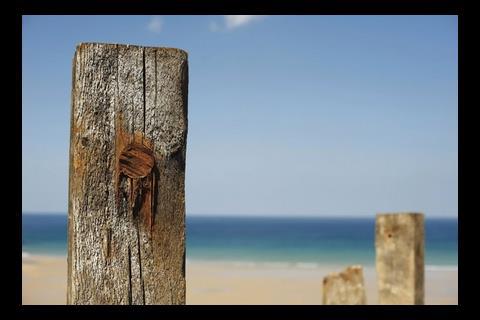

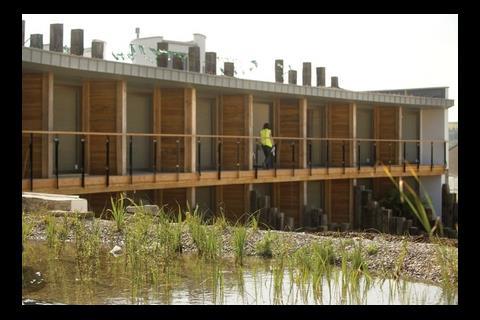
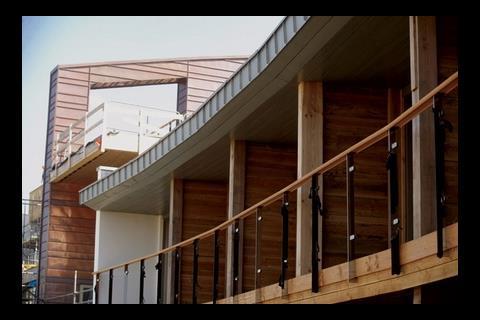

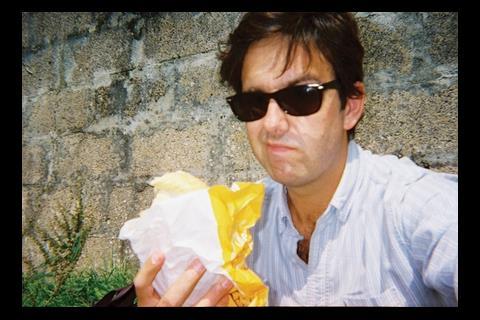
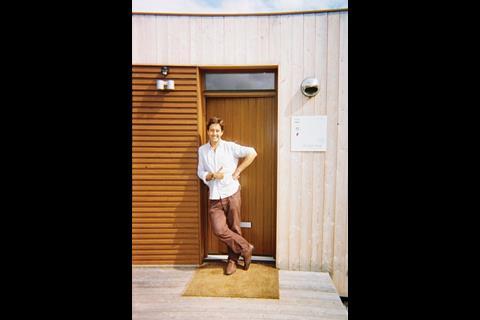







2 Readers' comments